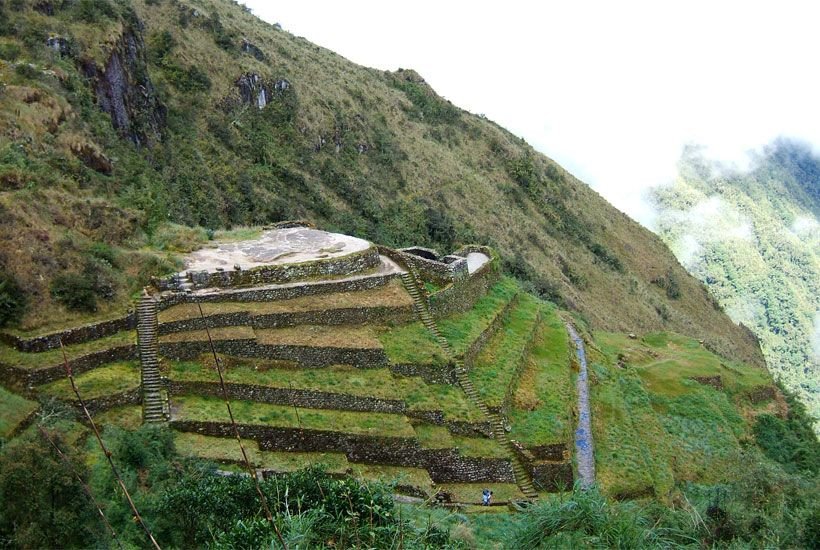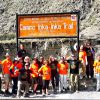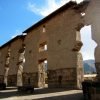8 Facts About the Inca Trail You Need to Know Before Your Visit
The mysticism of Peru’s Inca Trail attracts tourists from every part of the globe each year. These travelers are seeking the opportunity to put their ears to the soil and uncover the natural jewels and rich history that one can experience when hiking the Inca Trail to Machu Picchu. Are you dreaming of packing your bags and heading to a land of epic legends and enduring natural beauty? Hiking Inca Trail will place you in the footprints of the great and powerful Inca civilization. Under the canopy of lush Andean foliage, you will follow ancient paths and travel through green meadows to reach a destination that appears to have been carved by heaven’s hand.
You already know that the Inca Trail to Machu Picchu is one of South America’s most famous hikes and journeys. It has been a source of international fascination ever since it was modeled after the original excursion taken by Hiram Bingham in 1911. That journey opened up the mystery and majesty of the Machu Picchu ruins for the world to see. To this day, travelers still embark on the same four-day journey that Bingham completed in 1911. While four days is still the standard, there are a variety of Inca Trail tours to choose from when carving out your holiday plans. If you’re thinking of touring the Inca Trail to Machu Picchu, here are eight key facts about the trail and journey you need to know to be adequately prepared.
How Long Is the Inca Trail?
The Classic Inca Trail trek measures at 82 kilometers long. It would take you four days to complete this glorious trek. It should be noted that a journey this long and challenging should only be attempted if you feel that you’re in proper physical shape to complete it. If you don’t regularly participate in mountain climbing, hiking or camping, it is recommended that you complete a bit of training leading up to your trip. Every inch of this 82-kilometer hike is more than worth the effort. Experience rare and breathtaking views as you climb your way past the Inca ruins of Llactapata, Runkurakay, Sayacmarca, Phuyupatamarca, and Wiñay Wayna.
You will encounter whispers of an ancient empire for four unforgettable days before reaching its very heart and soul, Machu Picchu. Most Inca Trail tours will return you to Cusco by train following your time in Machu Picchu. However, some travelers opt to stay overnight in a town below Machu Picchu called Aguas Calientes. This is a good option if you’d like to enjoy some rest and a hot shower before your return to Cusco.

How High Do You Climb on the Inca Trail Trek?
Aside from the length of the Inca Trail, you should also consider the altitude of the region. The Inca Trail expedition will take you 13,860 feet above the ground to see glorious views. You’ll require a bit of preparation to ensure that you can comfortably and safely handle the expedition. Part of your preparation should include getting acclimated to the altitude.
How Many Days Should I Stay in Cusco to Acclimate?
It is advised that you spend two days in Cusco prior to starting your Inca Trail trek. This period will provide you with an opportunity to acclimate to the altitude and reduce your chances of experiencing altitude sickness. Symptoms of altitude sickness can include headache, nausea, loss of appetite, lethargy, and difficulty sleeping. Should you experience any of these symptoms during your trek, there are prescription medications and local remedies that may help you.
Can Anyone Explore the Inca Trail?
There is a level of exclusivity when it comes to the Inca Trail. Peru’s tourism regulations are quite strict in regards to how many people can enter the park at once. Due to the popularity of Machu Picchu, Peruvian tourism authorities have been forced to restrict access in order to protect the natural environment that surrounds the trail. It should be considered a privilege to step foot on the precious and sacred ground that leads to Machu Picchu. How can you make sure you’ll be among those lucky enough to embark on this adventure? You must pre-purchase an Inca Trail permit before arriving. Keep in mind that preference is given to established tour companies when handing out the 500 permits that are allowed per day. Simply showing up on your own won’t work. Luckily, permits are taken care of when you sign up with a tour company.
Is the Inca Trail Open Throughout the Year?
It is important for travelers to know that the Inca Trail is closed in February to accommodate for the region’s rainy season. During this period, the trails become wet and very difficult to access.
When Is the Best Time to Visit the Inca Trail?
Many people consider the period from April to October to be the best time for visiting Machu Picchu. Tourism reaches its peak during June, July, and August. Booking in advance is important if you want to reserve a place during this popular period. It is important to keep the Andean climate of Cusco in mind while planning your trip. Temperatures here fluctuate between 14 degrees Celsius and -16 degrees Celsius. You can expect to experience warm days and cold nights during your adventure. Cusco’s rainy season stretches from December to March. Machu Picchu has a semi-tropical climate that is marked by warm, humid days and cold nights. Machu Picchu’s rainy season lasts from November to March. The trails can be a bit slippery during this period. It is not uncommon for roads to be closed off from January to April because of landslides and flooding.
Does the Trek Have to Be Four Days Long?
While most complete tour itineraries last four days, Hiking in less time is possible. Many people choose alternative treks when the limited slots available for the Inca Trail trek have all been reserved. It should be noted that only the Inca Trail allows travelers to enter the ruins through the Sun Gate. However, there are shorter versions of the Classic Inca Trail trek that last for two days. These treks typically include an overnight stay in a hotel instead of camping. A shorter Inca Trail trek is an ideal option for travelers facing time constraints when seeking the life-changing experience of Machu Picchu. Please note that the shortened Inca Trail expedition is subject to the same permit restrictions as the regular trial.
When Should I Book a Spot for This trek?
Time isn’t necessarily on your side when it comes to booking your trip. Due to restrictions and limited permit numbers, booking as far as possible in advance is the wisest option. It is not uncommon for permits to sell out six months in advance. To ensure that you have a spot, you can reserve your place and make your deposit with a tour group even before permits become available for the year. Your tour operator will try very hard to get you the date you’ve requested. They can also help you reserve an alternative date near your preferred date if it is unavailable. Of course, there is never a total guarantee that you will get the tickets you want. Facebook.

















